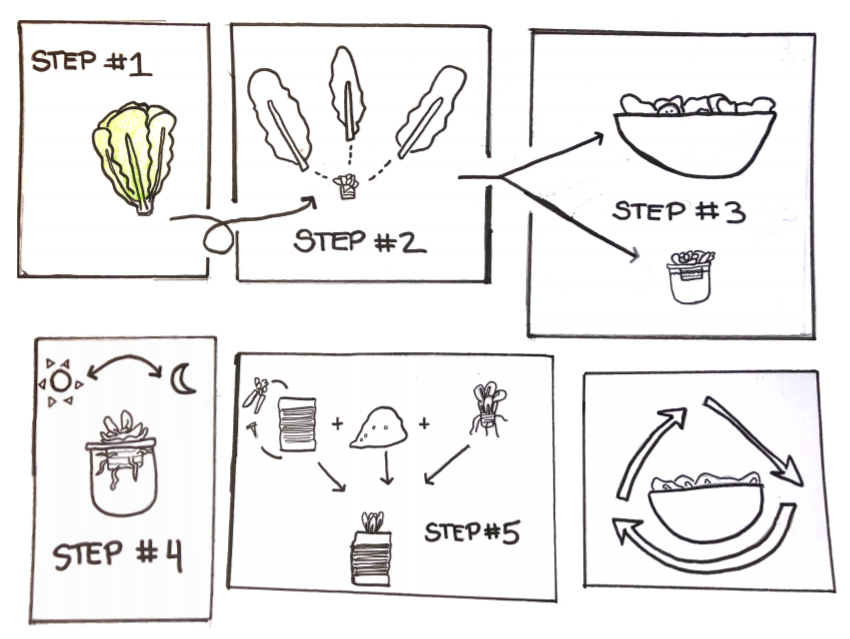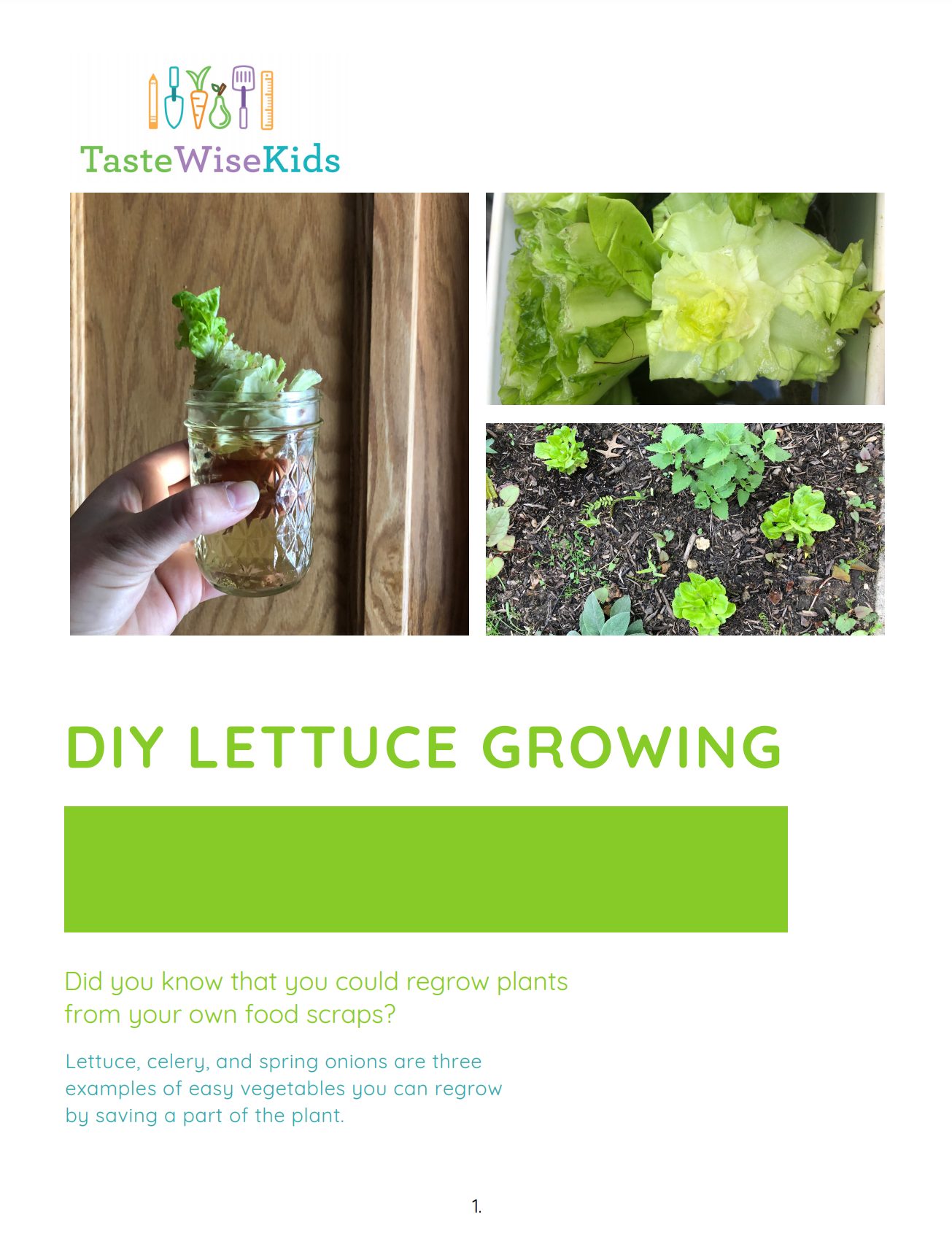#TWKatHome Activities
Growing Lettuce and Salad Bases
This week’s theme: Salad Bases
We are going to focus this week on the base of salads – whether it is lettuce, another green or something completely different (who doesn’t love a good pasta or chicken salad!).

Activity: Growing Lettuce and Salad Bases
We are going focus on all things green by exploring salad in new ways (don’t worry if you are not a salad lover, we still have things for you!).
To do the activity, follow the directions in our How to grow new plants from scrap food sheet (printable). Make sure to check out the bonus activities included, such as – what to do if you don’t have soil.
Materials for Activity
- Head of lettuce (don’t have lettuce? That’s ok, you can use other vegetables like celery or a spring onion)
- Soil or water
- A cup or small container
Printable Versions
Learn from an Expert: Chef Kiah Gibian of Wilde Thyme on Salad Bases and Growing Lettuce
Let’s start off with the salad base most often used – lettuce. Did you know that:
- Salad greens originated from the Mediterranean basin around 79 A.D., when they found them on paintings of ancient Egyptian tombs.
- Lettuce was one of the first vegetables brought to the new world by Columbus, probably on his second voyage.
- There are hundreds of varieties of lettuce, which belong to the sunflower family. Romaine, red and green leaf, butterhead, spinach, mustard, arugula, bib, and iceberg lettuce are all different types of salad greens.
- Most lettuce greens are very nutritious. Two handfuls of green leaf lettuce contain a high source of Vitamins A, C, and K.
- Americans eat about 30 pounds of lettuce each year.
Salad Bases
You don’t even need to have a specific base to your salad. Think about a fruit salad – it’s just cut up fruit. You can do the same with veggies – cut up a variety of vegetables and add dressing. Or use a few kinds of beans as the “base”. Or think about salsa – it’s really a salad in itself. Experiment with making different salsas (ever add in mango? Or corn?)
Chef Kiah Gibian is a huge lover of salads. She loves to eat greens in all sorts of different ways. One of her favorite ways to eat salad is for breakfast! She loves to start her day with something savory, but you can eat this Breakfast Salad for lunch or dinner too. You can make this salad lots of different ways, mixing in your favorite salad ingredients, the best part is adding a fried egg on top! Start with fresh greens as the base, add some sautéed sweet potatoes and onions, maybe some cheese or bacon if you eat that, any other fresh vegetables you might have (shredded carrot or tomato), adding a fried egg on top, and poof! You have breakfast in a salad! One of her secrets to making it taste so good is using fresh and local ingredients.
Instructions for Growing Lettuce
The instructions for this activity are broken down into five steps with direction for kids and for parents.
Step 1
Start with a full head of lettuce.
Step 2
Pull all the leaves off of the stem except for the smallest at the center
Step 3
Make a salad with the lettuce leaves, and rest the stem in a glass of water. The stem should not be fully submerged in water.
If you don't have soil stay at Step 3 and trying the lettuce by just using water instead. This is called hydroponic growing!
Step 4
Sit the glass of water in a safe place with some sun. Make sure the lettuce stem continues to be partially submerged in water. Wait for 1-2 weeks, or until you begin to see roots grow.
Step 5
Once roots have grown you can take an empty recycled can and fill it with soil. Dig a tiny hole and place-in the rooted lettuce stem. Press the dirt around it so it is in the dirt and fully supported.
Water the lettuce and watch in grow! Pick the leaves from the outside as it grows to add make a salad or add to a sandwich.
Connect With Us
Post or send us your question or a picture of your DIY lettuce on Facebook (@TasteWiseKids) or Instagram (@tastewise_kids) and use the hashtags #TWKatHome and #myTWKsalad, or email wjefffries@tastewisekids.org.
Key Activity Points
- Growing your own lettuce is very easy and doesn’t even need soil!
- Some foods can be grown from food scraps instead of from seeds
Keep Learning
- Want to impress others with some lettuce facts and history? Check this out.
- Explore compost with this interactive game.
- Learn more about container gardens by an urban gardener stuck at home.
- If you are thinking about doing some more planting this spring, this helpful resource from UMD Extension tells you when its best to plant specific crops.
- Test your knowledge of different kinds of pasta shapes before adding them to our next salad.

